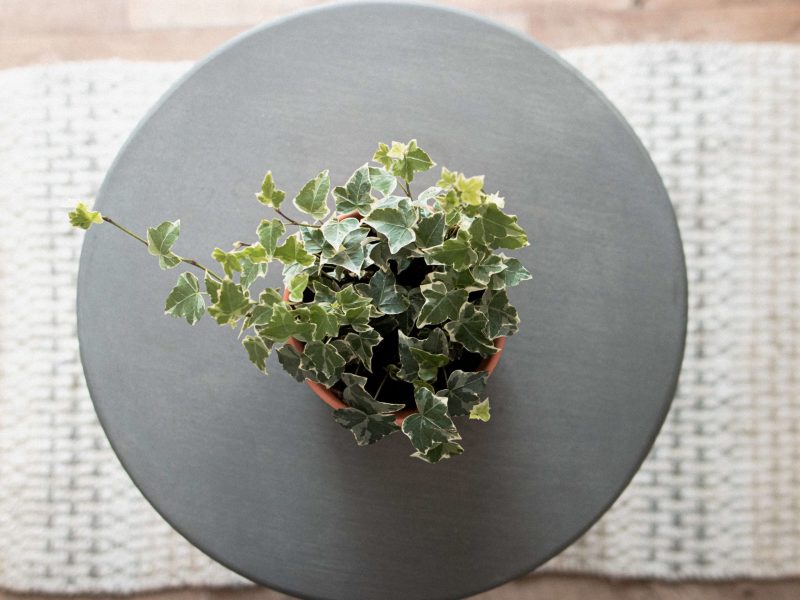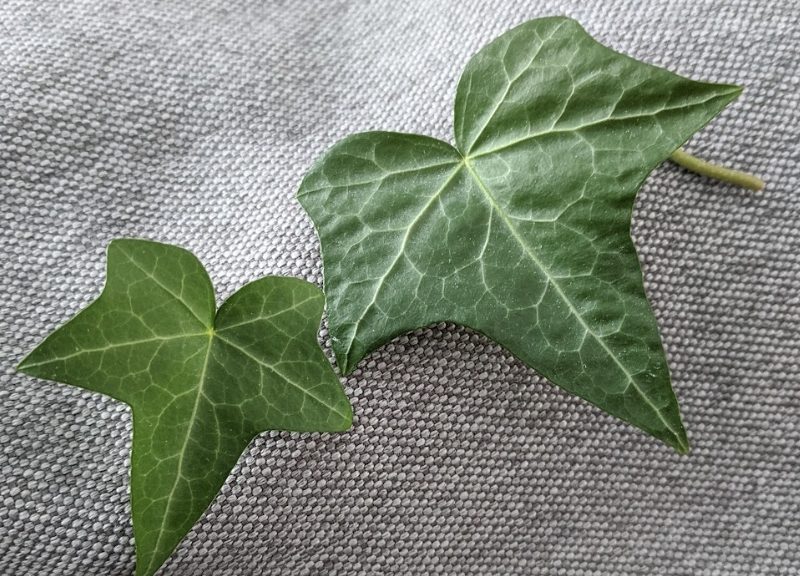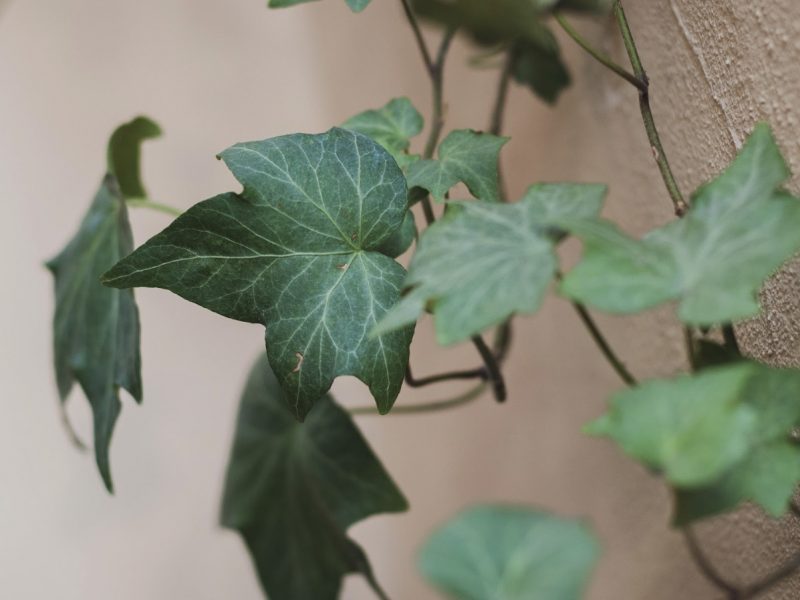
Although English Ivy Plants are often associated with outside gardens, they also make incredible houseplants. They are easy to care for and forgiving about care routines and environments. And luckily for us, they’re super easy to propagate as well, you can make several new plants from just a short vine cutting.
In this post, we will go through how to propagate your English Ivy through stem cuttings including a step by step process as well as top tips and any issues you may come across to ensure your propagation is a success!
Why propagate your English Ivy plant?
There are several reasons why you might choose to or be forced to propagate your plant. The main reason is often simply wanting more plants without actually having to spend any more money. English Ivy cuttings also make great gifts for friends and family as they are so easy to grow into full plants.
Another reason why many plant parents choose to propagate their English Ivy is that their plant is either too long or becoming very leggy. Cutting your English Ivy back encourages bushier growth and is a great way to cut back that winter growth which may have become straggly or leggy. But instead of simply throwing away those special English Ivy cuttings, propagating them stops them from going to waste.
You might also be forced to propagate your English Ivy plant if you notice that part of the plant is slowly dying. Whilst we are always strong believers that you should do everything you can to save your plant, we do recommend taking a few vine cuttings from the healthy part of the plant just in case your English Ivy plant doesn’t make it.
What tools/equipment you’ll need to propagate an English Ivy
It’s important to make sure you have all the right things before you start the propagation process. It’s always frustrating if you’re ready to propagate but don’t have the right equipment handy.
A healthy and mature English Ivy plant
Clean, sharp scissors/shears
Spare pot(s)
Fresh potting mix and water
Newspaper or plastic sheet (if propagating indoors)
Rooting hormone (optional)
You need a node to propagate an English Ivy Plant

How to propagate an English Ivy using vine cuttings
This is the main method of propagating English Ivy plants as it’s suitable for all maturities and lengths of English Ivy plants. It’s also really easy and means you can easily come away with several new English Ivy plants by taking a short vine cutting.
Locate a healthy vine or two
It’s super important that you only propagate a part of the plant that’s healthy. Avoid using any vines that are showing signs of unhappiness such as brown or yellow leaves, mushy vines etc. It’s likely that any problems will be transferred onto your cuttings which can cause them to die as young cuttings are very sensitive.
Make the cut(s)
Using clean scissors, shears or a knife, make the cut across the vine. It’s important your tools are clean so they don’t pass on dirt or pests to the cutting or mother plant.
Make sure that each section of the vine has at least one node and leaf. If possible try to include 2-3 nodes and leaves on each cutting but it will also work with just 1 so it depends on how much you want to cut off your plant. The number of cuttings you take is entirely up to you and depends on your English Ivy plant!
Remove the lower leaves
As you’ll be placing the cuttings into water, you want to remove the lowest few leaves from the cutting. They’ll rot if sitting in water for several weeks so it’s best to do this now.
Fill up a container with water
Next, you want to fill up a glass with fresh temperate water to place your English Ivy cutting(s) into. It’s super important that you don’t use hot or cold water as this can very quickly shock or burn your delicate cuttings. Place the cutting in the water so at least one or two nodes is submerged as this is where the roots will grow out from. Place your glass in bright but indirect sunlight.
Make sure you change out the water regularly
To prevent stagnant water and bacteria from forming, you need to be refreshing the water every few days.
Be patient
English Ivy propagation is actually relatively quick compared to a lot of other houseplants and you should see roots growing after only a week or two. It can be a little unpredictable though so just make sure your cuttings are getting enough light, warmth and fresh water and you shouldn’t have too many issues.
Plant your cuttings into fresh potting mix
Once the roots on your English Ivy cutting are a few centimetres in length, you can now pot them into fresh soil. It’s vital that you use a high-quality potting mix to make sure your cuttings are getting enough nutrients. Carefully place your cuttings a few centimetres into the potting mix.
Resume usual English Ivy care
Now that your cuttings are in their new home, you can go back to usual English Ivy care and soon those vines will be long enough for you to propagate again!
Propagating an English Ivy is simple!

English Ivy Propagation FAQs
What time of year should I propagate my English Ivy plant?
Propagating your English Ivy plant at the beginning of spring gives you the best chance of strong root growth as there will be plenty of months with warm and sunny weather.
Whilst you can still successfully propagate your English Ivy in autumn or winter, it will be slower and the risk of the cuttings rotting is higher too.
Should you use rooting hormone when propagating an English Ivy?
It’s definitely optional to use rooting hormone on English Ivy plants but you might choose to use it to speed up the process. These products stimulate root growth on new cuttings which can also produce stronger roots but you can have great success without it.
Can I propagate an English Ivy from a single leaf?
Unfortunately, as with a lot of houseplants, it’s not possible to propagate an English Ivy through just a single leaf. There needs to be at least one node on each cutting as this is where the root system will start growing from. If you do try to propagate a single leaf, it will usually stay alive for a week or two before wilting and dying out very quickly.
Should I fertilise my English Ivy cuttings?
We would always stay away from fertiliser until the cuttings are at least 1 year old. Fertilising too early can slow down root growth and cause a weak root system. Fertiliser can also shock the young cuttings which can cause a whole range of issues, the worst of which is killing the cutting completely.
When should you move the cuttings from water to soil?
English Ivy propagation doesn’t work on a strict timeline and it’ll be different for everyone. Some cuttings will start to develop roots after just a week, other times it may take a few months to see anything. Make sure that your cuttings are getting enough sunlight, as well as warmth and you should start to see some new roots growing soon.
Common problems when propagating an English Ivy
Whilst propagating English Ivy plants is often easier than some other houseplant types, it doesn’t mean that it won’t always be plain sailing. It’s important to look through the common issues below so you know what to look out for and can act quickly if something is wrong, giving you the best chance at solving the problem.
Why isn’t my English Ivy cutting growing new roots?
You should start to see roots growing on your English Ivy plant anywhere between 1-6 weeks. The process can be quite speedy but can also sometimes seem to take forever, that’s just the nature of propagation. As long as your English Ivy cuttings seem healthy and are in the right environment, there shouldn’t be a reason why roots won’t grow.
If you’re trying to propagate your English Ivy plant in less than ideal environments, heat pads and an LED grow light can really help speed up the process.
Why has my English Ivy cutting gone mushy?
If the vine or leaves of your cuttings are turning brown and are soft to touch, then it often means that your cutting has begun to rot. A common cause of this can be stagnant water so in future make sure you are refreshing it every few days.
If there is still part of the cutting that is healthy, then you might still be able to salvage the propagation by trimming off the mushy parts.
Why are the new leaves on my cutting small?
Don’t worry if the new growth on your English Ivy cutting is smaller than before. This is totally natural and is because the new root system is less mature than the mother plant so it can’t support as much growth.
Give it time and slowly the new leaves will start to get bigger. You can then trim away the smaller leaves if you prefer.
You should now have all of the information you need to successfully propagate your English Ivy. Whilst things can be a little unpredictable, with the right method, care and environment, you shouldn’t have too many problems.
Check out our full English Ivy care guide to find all the information on how to continue to care for your cuttings once they have matured.














